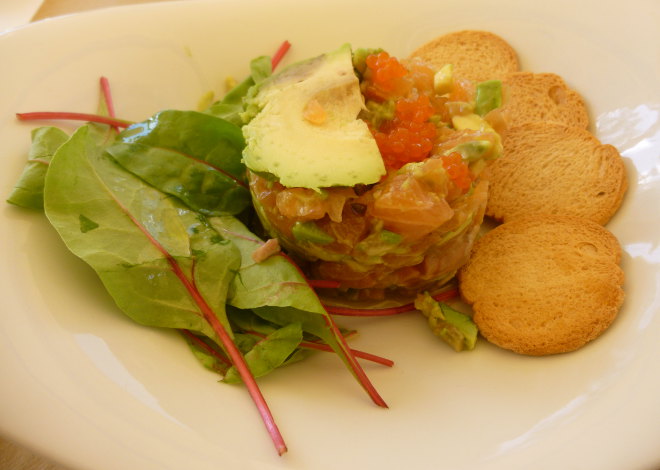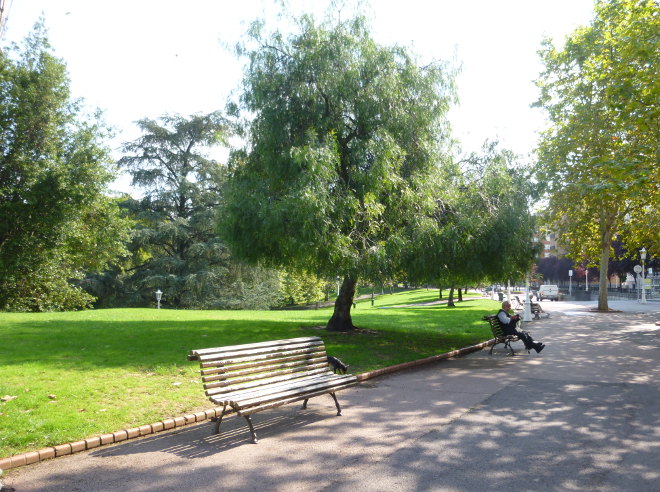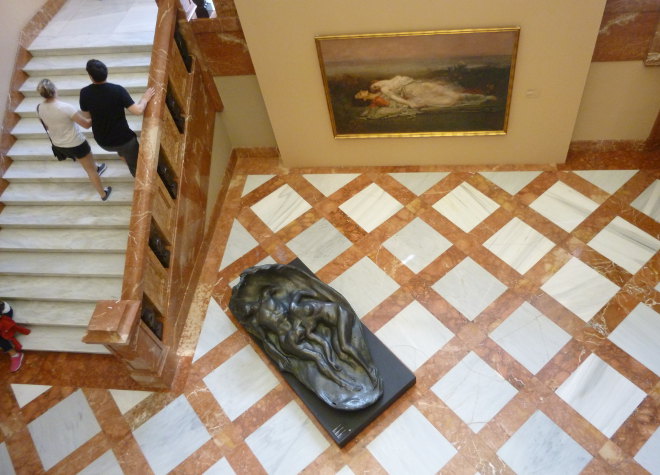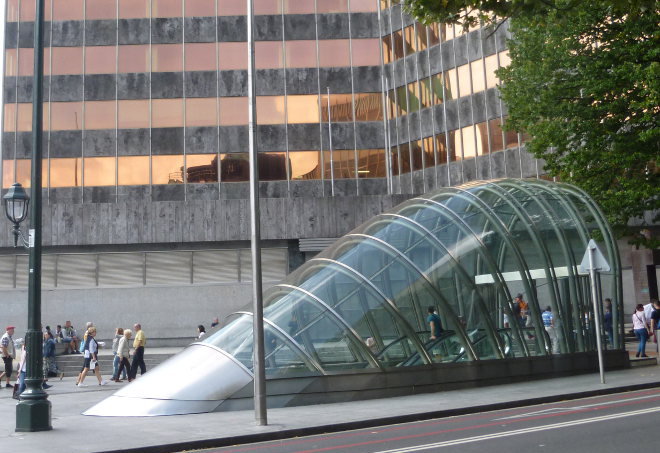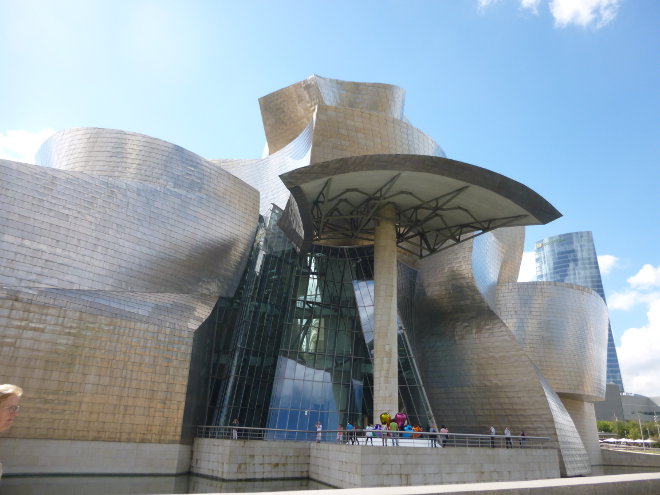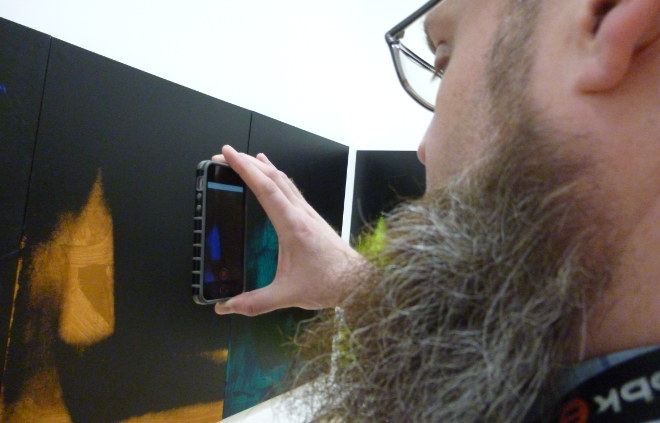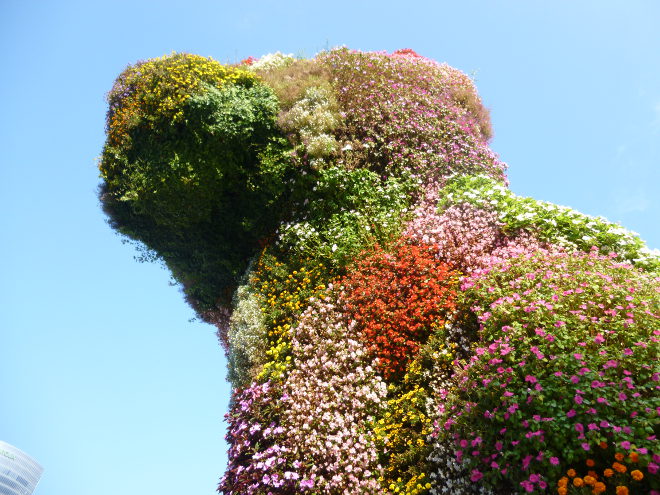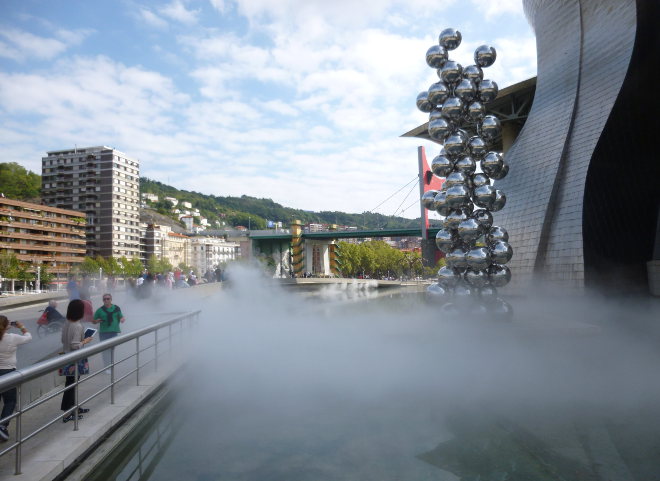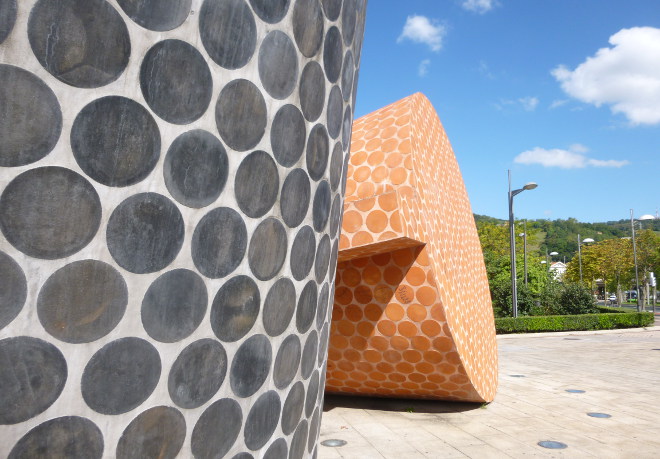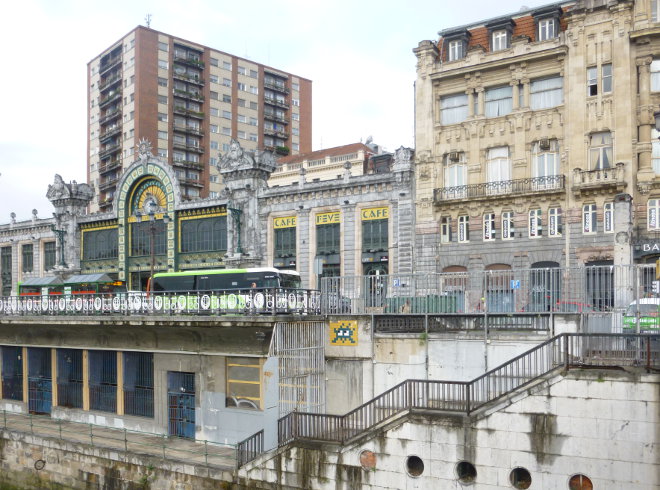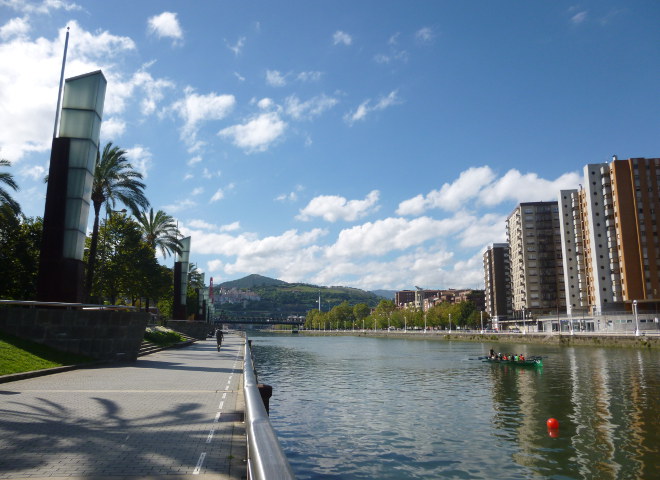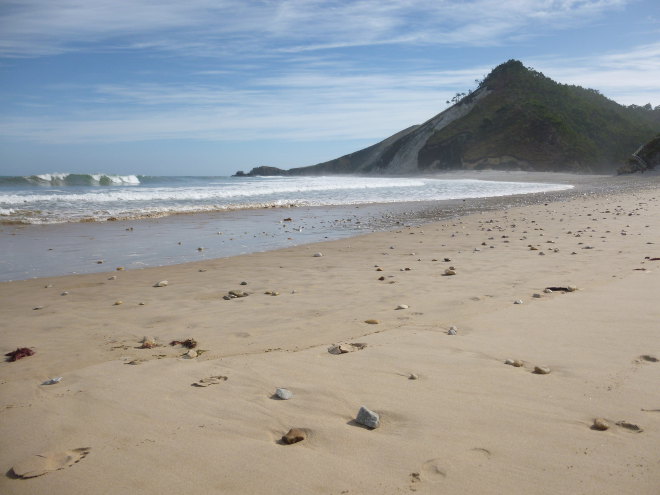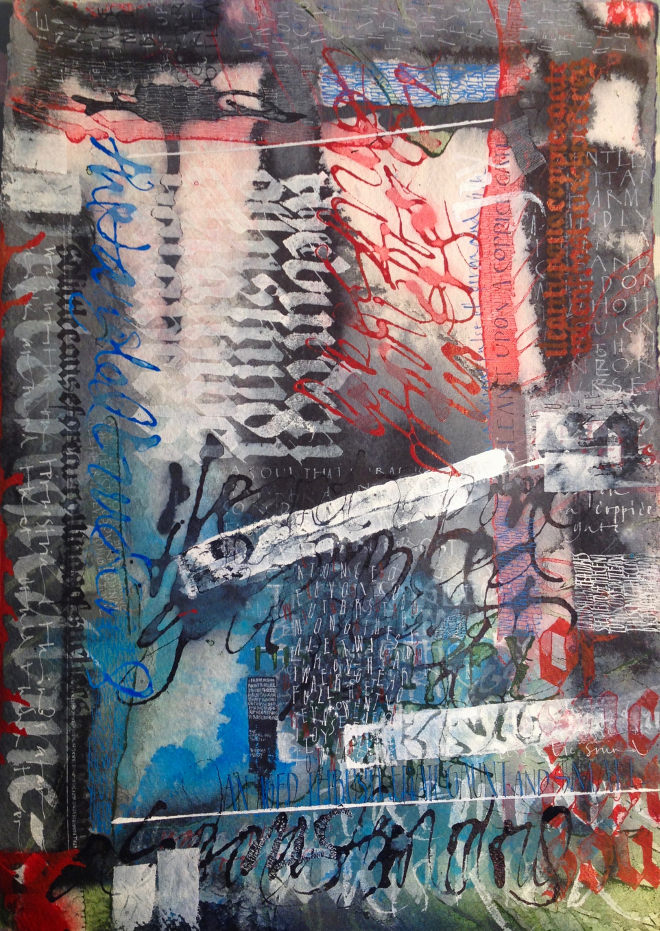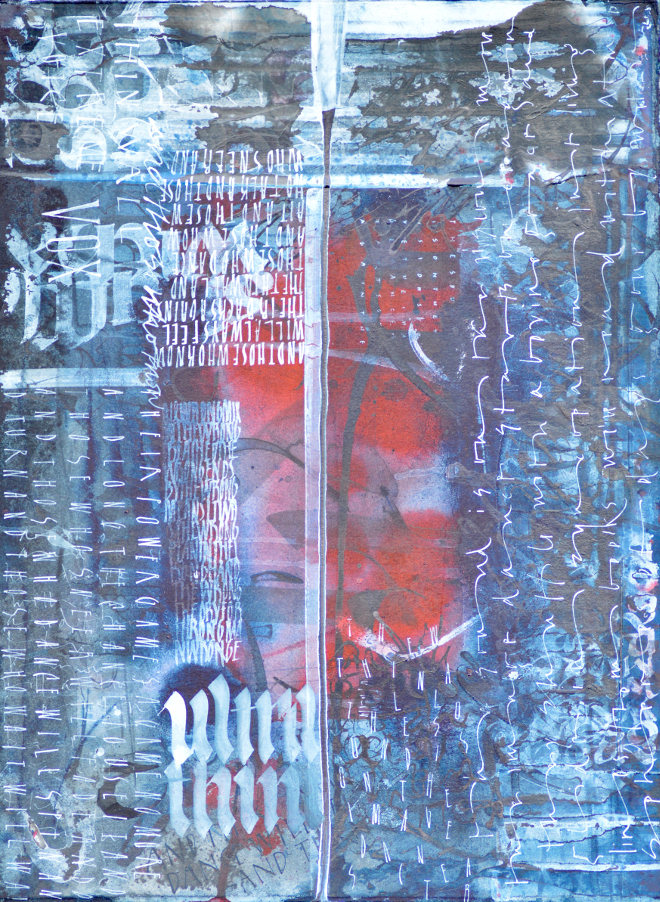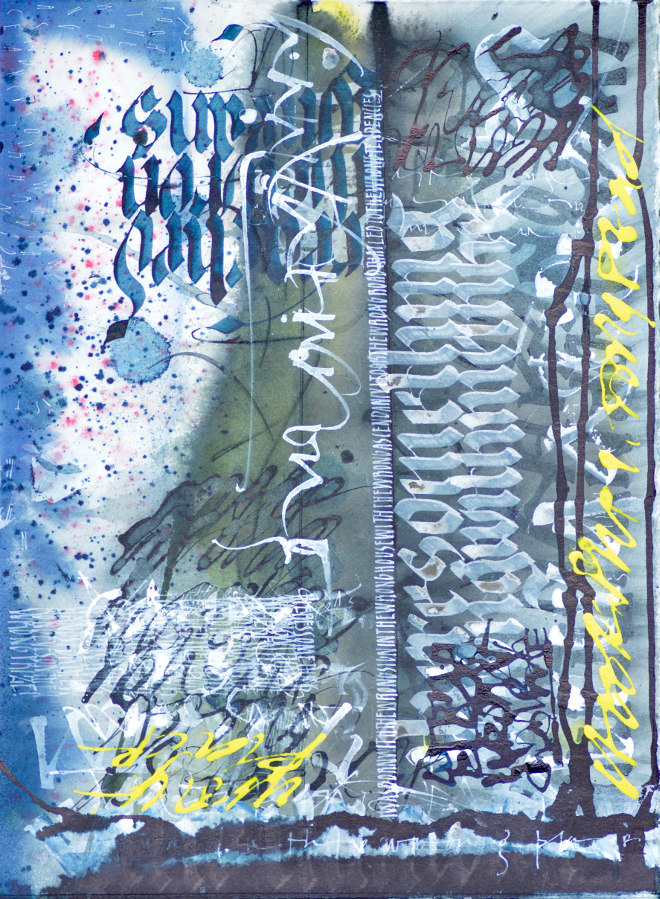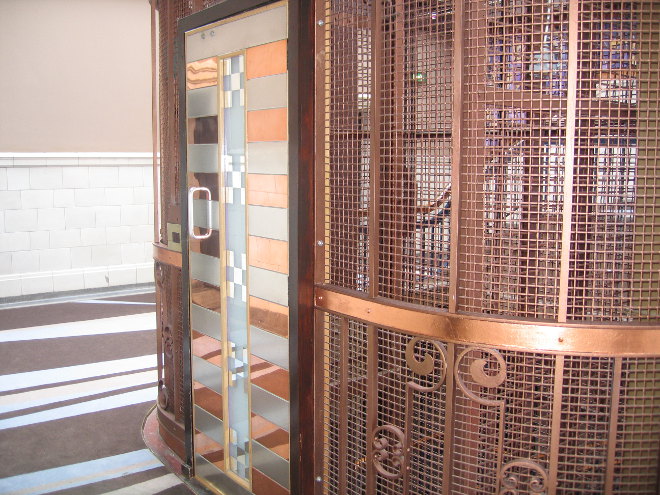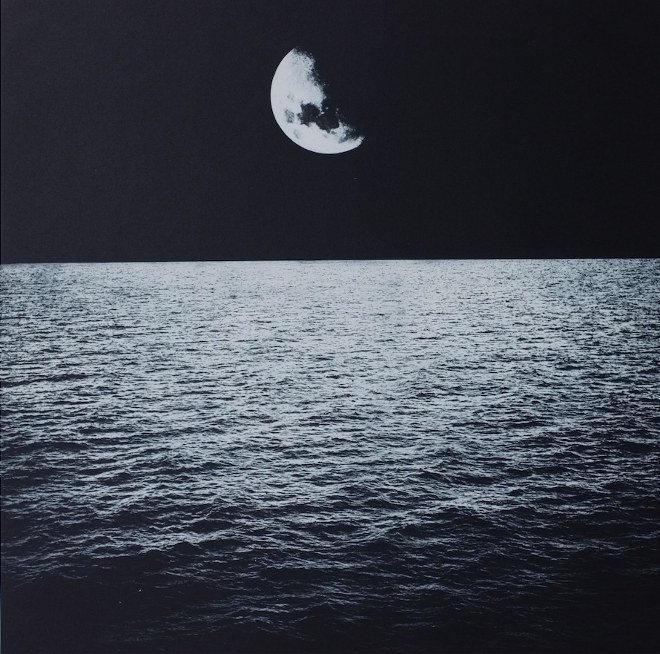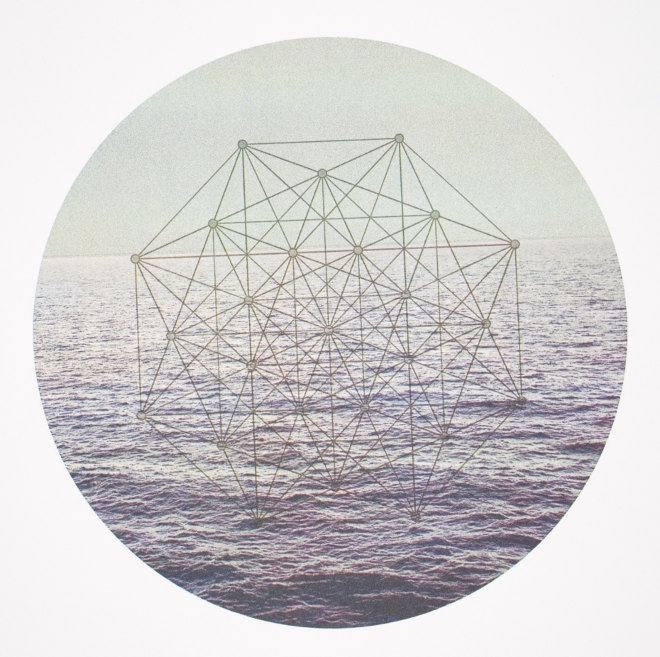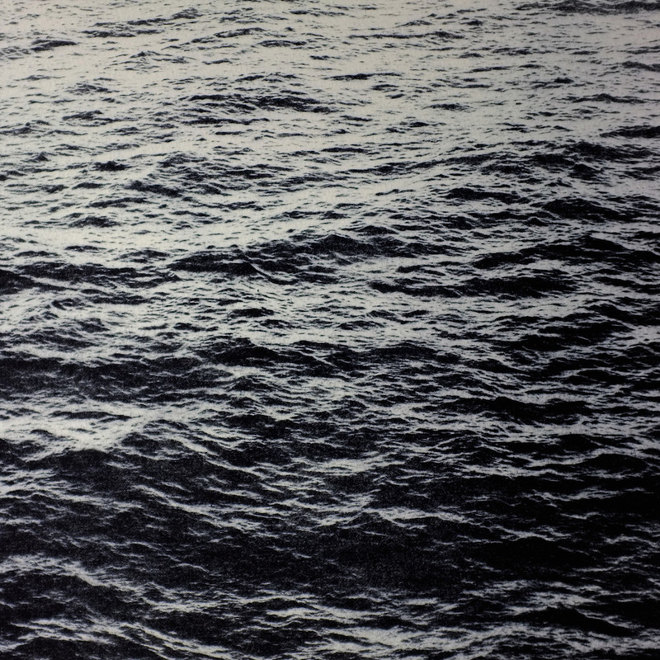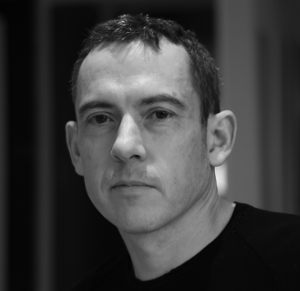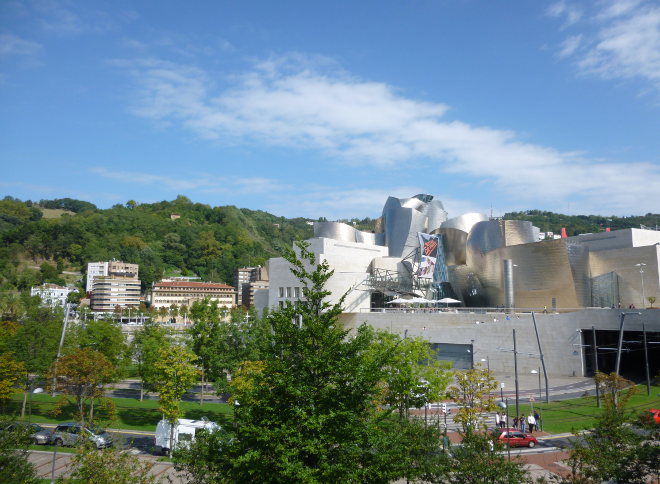 We were warned that Spain’s fourth largest city was far from being one of the most beautiful, but discovered a marvel of architecture, fountains and sculpture that had us enthralled at every turn. The presence of the Guggenheim Museum since 1997 has inevitably helped its metamorphosis from industrial hotspot to cultural centre, with notable museums dotted along with more cafes than you could count, and the twisting tidal Ría de Bilbao to confound you, while mountains make up an impressive backdrop.
We were warned that Spain’s fourth largest city was far from being one of the most beautiful, but discovered a marvel of architecture, fountains and sculpture that had us enthralled at every turn. The presence of the Guggenheim Museum since 1997 has inevitably helped its metamorphosis from industrial hotspot to cultural centre, with notable museums dotted along with more cafes than you could count, and the twisting tidal Ría de Bilbao to confound you, while mountains make up an impressive backdrop.
Here are my top ten recommendations for Bilbao.
1 Eat up
The food in Bilbao is marvellously varied, reasonably priced, and made from fabulously fresh ingredients. Naturally, you need to try some pintxos, the Basque Country version of tapas, generally costing between €1 and €3 for a delicious morsel of meat, fish or cheese piled on a small slice of bread. The pastries are light and moorishly delicious, while the seafood is outstanding.
Things we ate during our days here include salmon tartare with cod roe, pickled quail legs with haricot beans, steak, churros (Paul Hollywood would have been impressed by the crisp exteriors and fluffy centres), rose ice cream and a large quantity of puff pastry, usually served with whipped cream and chocolate sauce. To wash it all down, the Rioja wine is delicious, and cheaper than water. If you want a coffee, don’t forget to ask for “un Americano” – otherwise you’ll end up with an espresso. If you take your coffee with milk, ask for it “con leche”, or they’ll assume you want it without.
2 Meander in Doña Casilda Iturrizar park
This elegantly sprawling park comes to life around 6pm, when families flock to the winding paths, green lawns, and the duck pond, which gives the park its local name Parque de los Patos. With the evening meal not commencing till 9pm or later, this is the perfect time for a few drinks sitting outside at the park’s café, or simply to promenade and chat. Look out for impressive fountains, some spectacular tiling and albino peacocks.
3 Soak up fine art
The Museo Bellas Artes (museobilbao.com) or Bilbao Fine Arts Museum is set on one corner of Doña Casilda Iturrizar park, and is full of the work of Spanish painters.
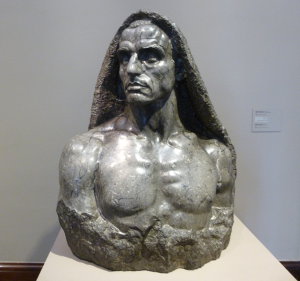 Our favourites were upstairs, where you can marvel at glowing canvasses of everyday life by Aurelio Arteta, Benito Barrueta, Joaquin Sorolla and others, as well as this bust of a Bilbao docker by Quintin de Torre Berastegui.
Our favourites were upstairs, where you can marvel at glowing canvasses of everyday life by Aurelio Arteta, Benito Barrueta, Joaquin Sorolla and others, as well as this bust of a Bilbao docker by Quintin de Torre Berastegui.
The building is itself a work of art, created by blending the Fine Arts Museum of 1908 and the Museum of Modern Art of 1924 into a classical building in 1954, was extended in 1970 and again in 2001. It’s open daily apart from Tuesdays and costs €7 apart from on Wednesday, when it is entirely free. Bargain!
4 Ride the metro
This elegant transportation system makes getting about really simple, and only costs €1.50 per ticket. Your first sightings of it may be the sci-fi slug-like eruptions designed by Norman Foster, emerging from sub-pavement level in a shimmer of glass and metal. If the sinuous shining curve seems familiar, it may be because Foster was also a key architect on The Gherkin in London.
5 Go to market
Teetering on the riverside in Bilbao’s Casco Vieja (Old Town), you’ll find La Ribera – a market hall that’s been thriving since 1929. An amble among the stalls will offer up everything from pigs’ trotters to artisan cheeses, and a copious amount of fish. Up one level you’ll find bars selling wine, beer and pintxos to enjoy on the terrace.
To absorb the beauty of the building, walk to the far end and admire the windows and glass tiled ceiling.
6 Be boggled by the Guggenheim
This Frank Gehry construcion of sweeping titanium and soaring curves is a true marvel on Bilbao’s riverside. Happily, the Gugenheim Bilbao (www.guggenheim-bilbao.es/en/) one of the first things you see of the city as the airport bus drives over the bridge alongside, but its definitely worth a closer look. Like a dance of angles and planes, of jousting metallic butterflies and fogged up mirrors, the building is a sculptural masterpiece, and that’s before you reach the art within.
Erm, and no, I’m not sure who that is photobombing my pic above!
When we visited there were some spectacular Anselm Kiefer artworks on display, including the artist’s The Renowned Orders of the Night. We also had the chance to visit the Andy Warhol: Shadows installation – a fun opportunity to be immersed in pop art, not least through the evocation to take photos and become part of the show.
7 Meet Puppy and friends
The gleaming exterior of the Gugenheim isn’t the only reason to stick around, with an array of art adding humour and happiness to this part of the riverside. At the museum’s fron entrance you can meet Jeff Koon’s Puppy, an impressively enduring comment on extravagance and sentimentality, with a West Highland gigantic terrier build from petunias, begonias and other flowers. Originally created for a German castle, it’s been guarding its present home since 1997.
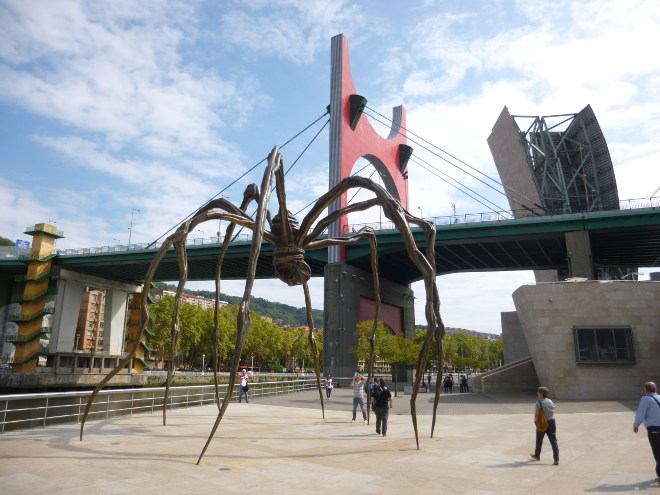 On the other side (as you exit close to the gift shop) you’ll find Louise Bourgeois’ Maman, an immense bronze and stainless steel spider, complete with a sack of marble eggs. Her impressive legs frame the view perfectly.
On the other side (as you exit close to the gift shop) you’ll find Louise Bourgeois’ Maman, an immense bronze and stainless steel spider, complete with a sack of marble eggs. Her impressive legs frame the view perfectly.
Then there’s Anish Kapoor’s gravity defying Tall Tree & The Eye, featuring 73 reflective spheres arranged as a tower of mirrored ball bearings. And Jeff Koon’s gloriously balloon-like Tulips. Plus, in case you hadn’t realised, that red structure on the bridge is another installation, Arcos Rojos, by Daniel Buren.
Hang around a while and you’ll experience Fujiko Nakaya’s fog pouring across the water and walkway. Somehow, this installation on a hot day in Bilbao seemed far more magical that the one I encountered on Pero’s Bridge during a naturally damp day in Bristol.
8 Look out for public art
Well, you can’t really miss it. Every corner seems to have something worth marvelling over, whether it’s drinking fountains adorned with bats, a statue or a pair of vast coffee mugs.
In Plaza de San José, you’ll find three sculptures by Vicente Larrea, created in memory of the architects and engineers who helped to build a new Bilbao in the 19th and early 20th centuries. The bridges themselves resemble sculptures, and occasional works of street art will stop you in your tracks.
See if you can spot any pixellated aliens, said to have been scattered through the city by a group of anonymous French artists. The fountains, too, are worth a few moments of your time, upheld as they are by wondrous figures and beasts.
9 Take a riverside stroll
This is one to enjoy slowly, during the siesta time that unfurl between 1 and 4pm, as that’s when you’ll see the locals jogging, roller blading and rowing – a reminder of why the people here are so friendly and laidback (unless you go to a post office, where you’ll find the folks are just as stressed out and pressed for time as they are in every post office in the world). What could be better than a culture that shoehorns a few hours of weekend pleasure into every working day? If you can get out on the water yourself, splendid. If not, satisfy yourself with a leisurely amble, pausing to sit and admire the views at every other bench you encounter.
10 Get out of town
The city is stunning, but the countryside is equally entrancing, especially the beaches of buttery soft sand. Watch the surfers do battle with the Atlantic waves, paddle in the icy shallows and see the Basque country that nature created.
Where to stay
Hotel Zenit Bilbao bilbao.zenithoteles.com
Petit Palace Arana Bilbao petitpalacearanabilbaohotel.com
Discover more about Bilbao at www.bilbaoturismo.net
Discover Brescia.
Discover Budapest.
Discover Bath.
Discover Barcelona.
Discover Laugharne.
Discover Reykjavik

